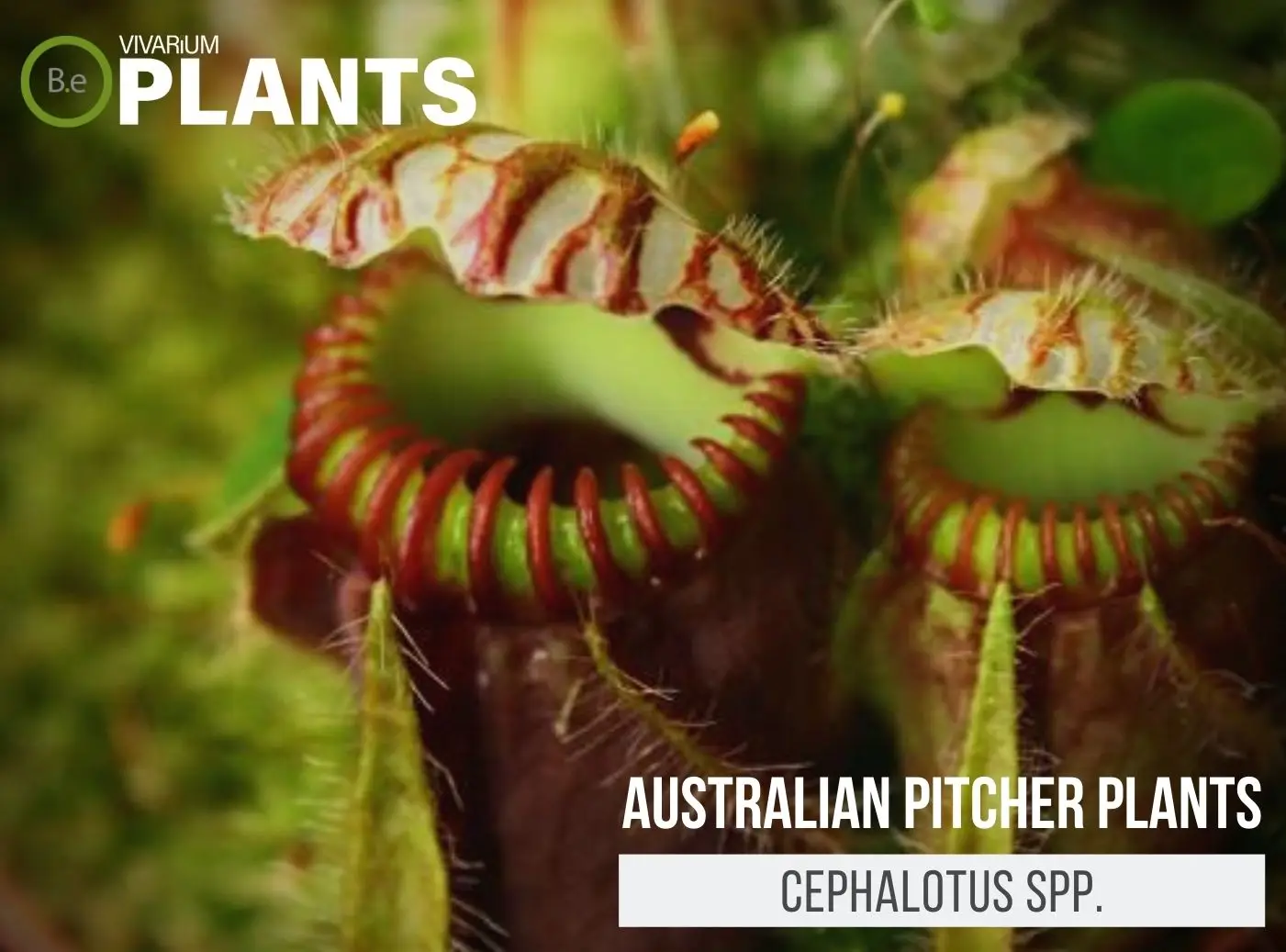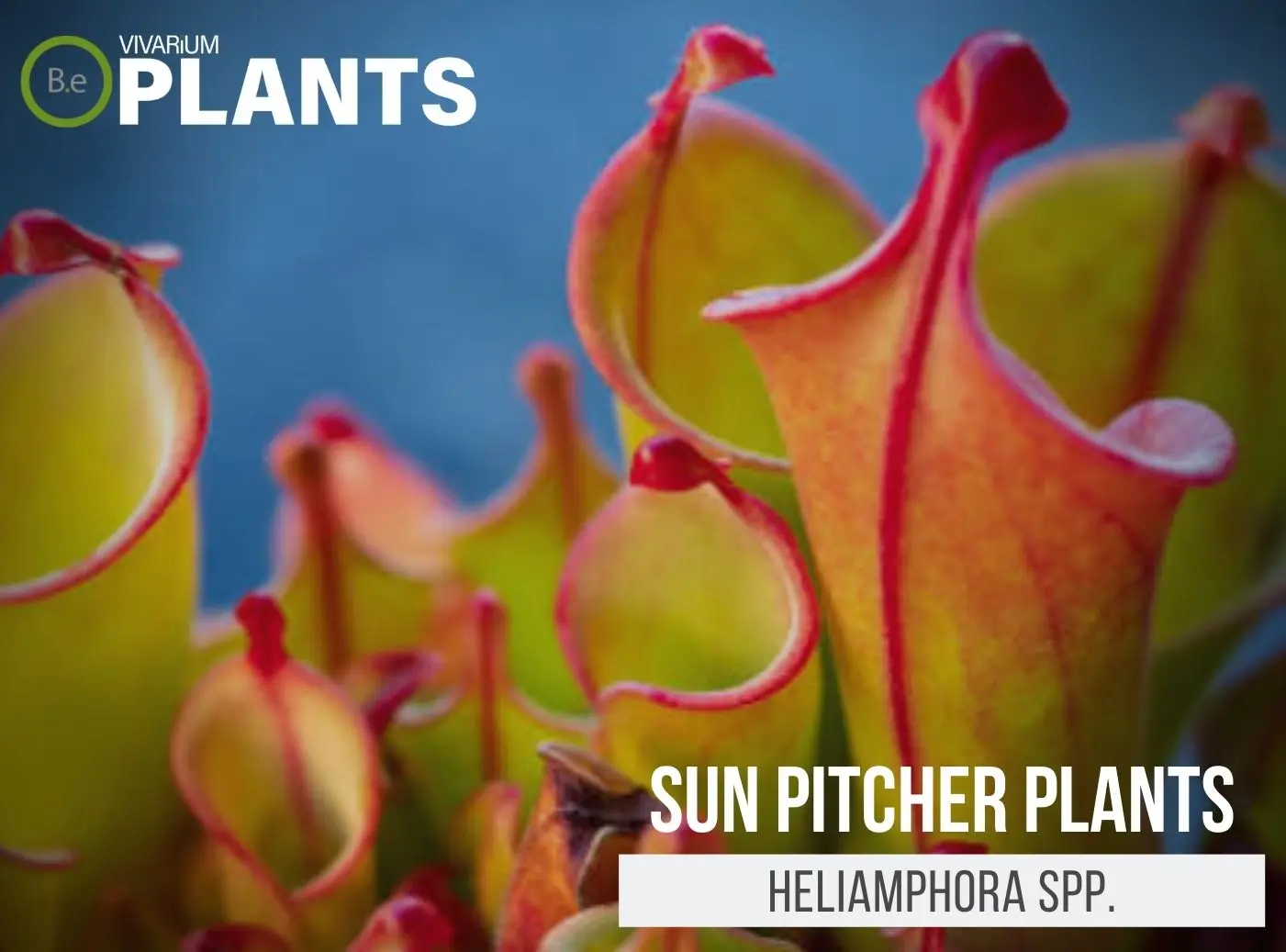Are you looking for an exciting and eye–catching addition to your terrarium?
Nature has a hidden gem in the form of monkey cups, and this article is here to help you explore this unique and beautiful carnivorous terrarium plant species.
From the bright colors, and unique pitcher shapes and sizes, to the fun and fascinating ways they catch prey— there’s so much to learn and love about adding a Nepenthes spp. to your terrarium.
Don’t wait any longer, read on and see just how this amazing plant can take your terrarium to the next level!
| Quick Stats: | |
|---|---|
| Scientific Name | Nepenthes spp. |
| Common Name | Monkey Cups, Monkey Jars, Tropical Pitcher Plant |
| Family Name | Nepenthaceae |
| Habitat | Tropical Woodlands or Rainforest |
| Temperature | 68°F to 85°F |
| Height | 8 to 30 inches |
| pH | 4.0 to 8.0 |
| Lighting | Bright, Indirect |
What Are Monkey Cups?
Nepenthes spp. is a genus of carnivorous plants native to the tropical climates of many countries like Sumatra, Borneo, and The Philippines.
They make use of their “pitchers” to attract and catch their prey.
They are not only known for trapping insects but some have been known to consume small amphibians like frogs as well.
These plants come in a variety of colors and shapes, from delicate vine-like plants to larger, shrub-like plants depending on the species.


Monkey Cups Facts
Monkey Cups are a species of carnivorous plants native to Southeast Asia, Australia, Madagascar, and the Philippines.
Although they may look similar to other pitcher plants, it’s actually the largest genus in their family.
There are more than 130 known species of Nepenthes.
They are aptly named after their characteristic cup–shaped leaves which they use to trap prey by secreting sweet nectar.
On the inside of the pitchers, there is a sticky mucilage that immobilizes prey, and special glands release digestive enzymes to break down their meal.
The enzymes created by the Monkey Cup are used to further break down the partially digested prey, accessing compounds such as nitrogen and phosphorus that the plant can use for growth.
Description
These plants tend to grow in large, shrubby clumps and need plenty of airflow to stay healthy.
The leaves are large and waxy and the pitchers are often brightly colored and fused with the leaves.
They also produce small, complex flowers consisting of numerous petals and sepals, which function as their reproductive organs.
Most pitcher plants range from 8 to 30 inches in size.
However, some of the species in this genus have been known to grow up to 12 feet in height.
Habitat
Nepenthes spp. is native to tropical climates, mostly found in the woodlands or rainforests of Southeast Asia.
The common factor between all of their natural habitats is the warm temperatures and moist substrate, as these are essential for them to thrive.
The temperatures in their native environments range from 68-85 degrees Fahrenheit.
PH Preference
These plants prefer a slightly acidic to neutral pH level, around 4.0-8.0.
Lower levels of acidity are more desirable, allowing the soil to be more oxygenated and more conducive to microbial activities.
The pH level of the substrate should be tested periodically to ensure that it is not too high or too low.
Vivarium Type
There is no singular type of enclosure that is required for the Monkey Cups Plant, and it can thrive in a variety of vivarium types.
Before selecting a suitable enclosure, it is essential to consider the amount of space that is available.
Additionally, the right enclosure should offer tropical and humid conditions for the monkey cup plant to do well.
Examples of enclosures that will suffice include:
-
- Paludariums – Half aquatic/ half terrain-based enclosure.
- Terrariums – Fully terrain-based enclosures with little to no aquatic features.
Vivarium Placement
Nepenthes spp. can thrive in a vivarium as long as it is placed in partial shade and not in direct sunlight.
If the plant is exposed to too much light, it will suffer and will eventually die.
Place these plants in the background of the tank with plenty of light, similar to their natural habitat.
Substrates should be moist at all times and the tank should be placed away from any UV lights to prevent burning the leaves.
Substrate
Because of the monkey cup plants’ unique native habitat, they will require a distinct type of substrate to thrive.
In the wild, these pitcher plants like to grow in marsh bog environments.
A marsh bog substrate is a type of soil found in wetland areas such as marshes.
It is composed of partially decomposed leaves, mosses, and stems, and is saturated with water.
This soil is often dark in color, high in acidity, and low in fertility.
Marsh bog soil can also contain high levels of tannins, which gives it its characteristic smell.
This type of terrarium substrate is an ideal environment for wetlands organisms such as the Monkey Cup Plant.
Sphagnum moss, perlite, sand, and coco fiber soil are all materials that can be used as soil mixtures for these plants.
Lighting
Nepenthes spp. prefer wet conditions and partial shade.
If these plants are exposed to too much natural light or are in the direct path of artificial lights, they will likely suffer.
Aim for cooler color temperatures and bright, indirect lighting to replicate the natural habitat of these plants.
A great option is regular fluorescent or LED terrarium lighting.
Such a setup won’t produce too much heat or UV radiation.
Generally, the recommended dose for best growth is 12 hours of light per day.
Buy Sun Pitcher Plants
Before buying a Monkey Cup Plant, thoroughly inspect the foliage for any discoloration, drying, black spots, or damage.
Be sure to look for any signs of pests or fungal diseases, as well as check the pitchers for any issues.
If the plant appears to be in poor condition, it may struggle to adapt to a new home.
Remember to click the image below for more information on the current price and other relevant details about the Nepenthes spp.:
Monkey Cup Plant Care and Propagation
The natural reproduction processes of Nepenthes spp. are complex and require fine-tuned environmental conditions to successfully propagate.
To make things easier, it is best to propagate from seed or from runners.
These plants can also be propagated by division, but the process can be difficult and may end in failure if not done correctly.
To ensure the best chance of success with division, use sharp and clean cutting tools.
Last but not least, always make sure to place the division portions directly into their own section of the substrate.
How to grow
When caring for monkey cup plants, it is important that you pay attention to the watering, lighting, and feeding schedules.
During the growing season, it is necessary to keep the environment consistent and humid.
Water these plants regularly and try to feed them a mixture of insects as they require complex nutrients to live.
Generally, pitcher plants will not require any added fertilizer.
However, if there are no critters for it to eat and it is struggling to grow more pitchers, you can pour a few drops of diluted liquid fertilizer into the pitchers.
Watering
It is important to water Nepenthes spp. regularly.
Watering should be done using low-pH water when the substrate starts to dry.
The water temperature should be kept at around room temperature.
Avoid watering the pitchers themselves, as this can cause harm to the plant.
It is important to use rainwater or distilled water so that the plant can take in the necessary minerals to stay healthy.
Plants Similar To Sun Pitcher Plants
Incorporating a variety of plants in your enclosure can enhance its appearance.
To achieve a diverse and visually appealing setup, consider including different types of flora that are compatible with the same habitat.
If you are having difficulty obtaining this plant or want to explore alternatives to Monkey Cup Plants, there are other tropical plants that may thrive alongside or in place of it in your vivarium:
Conclusion
The Monkey Cup Plant is truly a remarkable and fascinating species that provides beauty and vibrancy to vivariums.
It is rewarding to watch its growth and to witness its flairs of color.
Often overlooked, they are becoming increasingly popular among plant keepers, and with some basic knowledge and proper research, they can be sure to successfully maintain these plants in their collection.
Monkey Cup Plants make excellent terrarium plants, as their tendrils stretch out and their pitcher plants create motion on the inside of a terrarium.
Plus, this species comes with a fun and amusing backstory that is always a plus.
Frequently Asked Questions
Nepenthes spp., commonly known as Monkey Cups, got their nickname due to their intriguing pitcher or “cup”–shaped leaves. Monkeys have been observed drinking from these pitcher–shaped leaves filled with rainwater, earning these tropical pitcher plants their commonly known name.
Monkey Cup Plants are carnivorous predators that feed on a wide variety of small insects, including spiders, crickets, and flies. Some have even been known to consume small amphibians like frogs as well.
Maintaining moderate-high humidity and ensuring the Nepenthes species receive the necessary light and water are important for proper care. You should also provide your pitcher plants with a consistent schedule of food, recommending insects for a complex nutrient profile. Fertilizers are typically not necessary for this type of plant, but if you notice weak growth and a lack of prey, administer a diluted liquid fertilizer into the pitchers for added support.
Monkey Cup plants, native to tropical regions of Central and South America, thrive in moist, humid climates. They need indirect sunlight and rich soil to grow and can be found in tropical rainforests, near water sources, and in the humid parts of jungle habitats.
Yes, monkey cups (also known as tropical pitcher plants) do bloom. The flowers are typically white, pink, or purple and look like small, fragile bells. The flowers are typically found on the tips of the pitchers and open in the early morning.
Tropical pitcher plants typically have a lifespan of 7 to 10 years.




